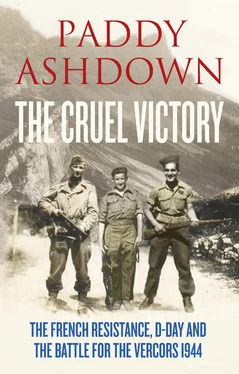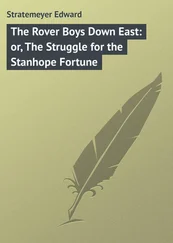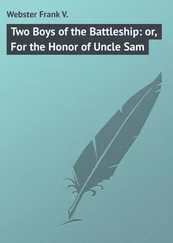The first effects of the 1943 decision to encourage ‘air-nourished guerrilla operations in the southern Alps’ were felt in the Vercors on the night of 5/6 January 1944. In the early hours of 6 January, the Union Mission, together with twelve containers of arms and six packets containing 16.25 million francs, was parachuted to a landing site at Eymeux, under the western edge of the Vercors plateau. The three Union Mission members who parachuted into Eymeux that night were an ex-British schoolmaster turned SOE agent, Henry Thackthwaite, a US Marine called Peter Ortiz and a French radio operator.
The Union Mission’s task was to assess the state of the Resistance in the Savoie, Isère and Drôme (especially in relation to the Maquis’ needs in terms of weapons and clothing) and their possible deployment after D-Day. Although the Mission members dropped wearing civilian clothes, they brought uniforms with them and wore these for the rest of their visit – the first Allied officers to have been seen in uniform in metropolitan France since the fall in 1940.
The Mission’s first visit was to the Ferme d’Ambel. André Valot was there. Though his description suffers from a number of inaccuracies and is characteristically over-coloured, the general impression – and especially in his account of how this event was seen by the Maquisards – is probably fairly accurate: ‘[One day] a huge yellow limousine arrived … magnificently decorated with three flags flying from its bonnet: the French Tricolour in the centre and the Union Jack and the Stars and Stripes fluttering proudly on either side. Even before the doors were fully open an extraordinary figure leapt out: a gangly red-haired giant with a lanky body, a bony face – sunburnt to the colour of coffee – and the expression of a child with a permanent grin on its face … “Hi, boys,” he said, pulling a hip flask out of his back pocket. “You sure are up pretty high here, but great country, yeah! I’m Lieutenant Jean-Pierre [Ortiz carried false identity documents in the name of Jean-Pierre Sellier]. Here have a drink. It’s whisky – the real McCoy. It came from the sky last night, like me. I would rather have broken my leg than break this. You bet!”’
Valot’s narrative continued: ‘In the back of the yellow limousine there was a coffer full of Chesterfield cigarettes and chocolates, whose distribution created an immediate, steadfast and unbreakable affection for the American Army in general and most particularly for its representative, who had so wonderfully fallen to us from the sky the previous night. Every time Ortiz met someone new he pulled out his indestructible hip flask, filled up a small drinking cup which also acted as its metal cap and ordered, “Here have a drink.” He was rarely refused, roaring with laughter and slapping the poor unfortunate recipient on the back with a force sufficient to dislocate the collarbones of the unwary.’
The reports submitted to London by Thackthwaite, both by coded signal from France and on his return in May, were comprehensive. He recommended that ‘The Vercors plateau offered the best strategic position on which the Maquis could be based. From here they would have the best chance of attacking and hindering the Germans, whether or not the expected invasion of the southern coast of France materialised.’ For this reason he especially asked for heavy weapons to be sent to the Vercors – a plea which was to be repeated many times, always in vain.
Thackthwaite made other notable recommendations and observations: ‘All sorts of expedients were … used [by the Maquisards] to obtain money, including stocks of tobacco … taken from shops [which] are sold on the black market, and … acts of brigandage … [We] found men in the Maquis barefoot and with one blanket between them … [there was a general] lack of equipment and especially transport … the Maquis surgeons need … surgical knives, scissors, forceps, anaesthetic masks, dissecting scissors, basins, amputating saws, morphine, quinine, permanganate of potassium, syringes, needles and tourniquets … The civilian population are very impatient for D-Day to come … Politically de Gaulle is the only head the people look to … morale is good and improving now the winter is over … The civilian soldiers [Maquis] show a great deal more bite than the ex-officers of the Armistice Army … Maquis lack of confidence in such men is easily understood … many officers … gave us the impression that all serious fighting can be left to the Allies … It might be possible to control places like the Vercors … but the numbers at present are insufficient … [they] would have to be reinforced by parachute troops … 7,000 men are necessary for the Vercors.’
The third week of January 1944 saw a spell of bright, settled and warm, almost spring-like, weather in the Vercors. The roads were suddenly free of snow – unusual in any January, but doubly so in a winter such as this.
Perhaps it was the good weather which, on 17 January, tempted Narcisse Geyer to move his troops from the Forêt de Thivolet off the west of the plateau to Les Combes, a large farmhouse in the woods above Saint-Martin-en-Vercors. He was preparing for his take-over of command from Alain Le Ray at the end of the month. His first action was to conduct a brief inspection of the Maquis camps which made up his new command. Afterwards, he returned to his base full of complaint about what he had seen in the camps: ‘It is just not possible to take seriously a war with these people who seem incapable of even the smallest sign of discipline.’
Marcel Descour had also decided that the growing strength of the Vercors meant that he should establish his regional headquarters on the plateau. He chose a large farmhouse, Peyronnet, in the little village of La Matrassière, only 3 kilometres or so from Geyer. On 4 January he sent an advance party of staff and radio operators, one of whom was Pierre Lassalle, to begin preparations. Descour and his counsellor/monk Dom Guétet would follow later. Despite the relatively clement weather and the kindness of the inhabitants of Peyronnet farm, life was tough, especially for the operators working their radios and Morse keys in the farm’s barns. ‘For fifteen straight days’, Pierre Lassalle recounted afterwards, ‘my life was divided between brief visits from our hosts and long hours submerged under a mountain of blankets, listening to broadcasts, my headphones permanently clamped on my head and my numb fingers twiddling radio dials.’
Perhaps it was the same good weather that also tempted Herr Bold and Herr Schönfeld, both German officials from Valence, a Dutch journalist, Meneer Koneke, and an interpreter to take a drive through the middle of the Vercors the next day. The tourists requisitioned a car from a Valence garage and instructed the owner to drive them to the Vercors, approaching the heart of the plateau through the Gorges de la Bourne. They got as far as the narrow steep-arched bridge which crosses the Bourne torrent at the Pont de la Goule Noire (literally the Bridge of the Black Hole). The bridge is a perfect spot for an ambush position – which was exactly what it was that day. The ‘tourists’ were immediately taken prisoner and escorted to Geyer at Les Combes farm. Here they were politely but firmly interrogated and then incarcerated under armed guard in a shepherd’s hut behind Geyer’s headquarters.
The following day, fifteen-year-old Gilbert Carichon was walking down with his brother, having been collecting wood in the forest above Rousset – the village in which he lived – when he saw a requisitioned Peugeot 202 car with four German soldiers. The Germans were asking questions about the four who had gone missing the previous day – had anyone seen them? Gilbert and his brother walked quietly past the group being interrogated and slipped down a back alley to the small village grocer’s shop. There they found Marcel Roudet, the corrupt ex-policeman who led the Maquis Raoul. As they watched, the German soldiers drove off north towards La Chapelle. Roudet suddenly pulled out a whistle and blew it hard just as the Germans were passing the cemetery on the outskirts of the village. Immediately eight to ten Maquisards popped up behind the graveyard wall and sprayed the enemy vehicle with machine-gun fire. The car immediately slewed into the ditch. Inside was one soldier wounded in the back who was quickly finished off (afterwards they said he had reached for a weapon). The other three got away. One vanished into the forest; a second, wounded in the foot, managed to struggle up the mountain to the Col de Rousset, where he phoned for help. A third reappeared some time later near La Chapelle and was quickly captured and imprisoned.
Читать дальше












